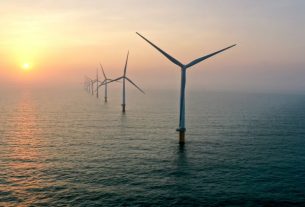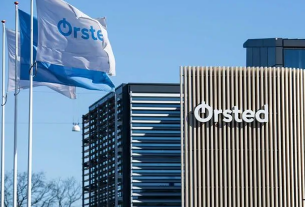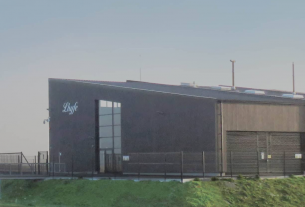United Kingdom – The Crown Estate has identified five broad “Areas of Search” for the development of floating offshore wind in the Celtic Sea, marking a significant advancement in supporting the UK’s net zero ambitions.
This represents a significant accomplishment and lays the groundwork for future expansion of capacity, assisting the UK in meeting its goals for renewable energy and promoting economic growth.
Following technical analysis and extensive consultation with The Crown Estate, the UK and Welsh governments, key agencies, and specialized stakeholders, these areas have been identified. The Areas of Search will be refined based on additional stakeholder and market feedback into smaller project development areas, where the first generation of commercial-scale floating wind farms could be constructed. These project development areas will be made available to the market through an open tender that will start in the middle of 2023.
By 2035, it is hoped that these regions will produce 4GW of floating offshore wind energy, sparking the local economy and supplying nearly 4 million homes with electricity.
“Stepping stone”
The Crown Estate will tender larger, 1GW-scale projects, which may be developed in a phased or “stepping stone” approach, in recognition of the UK’s ambitious net zero agenda and the need to develop competitive technology and supply chains. This strategy is purposefully designed to present more chances for supply chain investment and to make supporting infrastructure coordination easier. The Crown Estate is committed to collaborating with and supporting other interested parties to establish a robust supply chain in the area, and it is looking into options to encourage investment. More details will be released in the coming months.
The proposed leasing round will be crucial to achieving the Celtic Sea’s goals for renewable energy. According to separate new research that The Crown Estate commissioned, the Celtic Sea has the economic capacity to support up to 20GW more in floating offshore wind capacity by 2045.
The proposed tender approach builds on previous leasing rounds’ experience to shorten development timelines and lower risk for developers, for instance by starting offshore survey work and the plan-level Habitats Regulations Assessment (HRA) before the market tender. In conjunction with this declaration, the HRA based on the Areas of Search will start. It will analyze how these leasing plans might affect the important habitats that make up the UK national site network of environmentally protected areas.
Using renewable energy from the offshore floating wind farms, developers will have the option to use cutting-edge techniques like green hydrogen production in their projects thanks to the Celtic Sea leasing opportunity.
Areas of Search
The Areas of Search consider a number of variables, such as fishing activity, navigational routes, and environmental sensitivity. The Areas of Search have been determined to be the most advantageous locations for floating offshore wind and those most likely to be delivered in the near term, accelerating secure domestic energy, by balancing these and other factors and taking stakeholder feedback into account.
The Crown Estate will also confirm seabed rights for three different “Test and Demonstration” sites in the Celtic Sea in 2023, subject to the outcome of the plan-level HRA. The implementation of larger projects in the Celtic Sea and elsewhere will be guided by the lessons learned from these smaller-scale developments.




